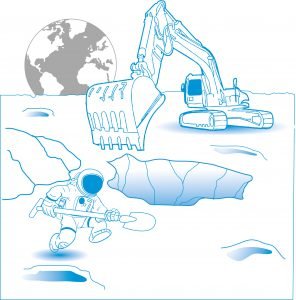Tell-tale signs of a shooting star – Comets, meteors and craters in the Solar System
To many ancient civilisations, the tale of a shooting star was an omen of things to come. In this series of activities, pupils will learn that a shooting star or meteor is actually a piece of rock that lights up as it travels through the Earth’s atmosphere. They will also learn why this happens and investigate how craters are formed when a meteor strikes a planetary surface. Extension activities focus on why small meteors can cause large impact craters and why we find so few craters on Earth.
Subject: Astronomy, Science Learning Objectives:
- Learn that a shooting star, or meteor, is the light produced by a meteoroid traveling through the Earth’s atmosphere.
- Understand how objects moving at high speeds through the Earth’s atmosphere can cause rapid air compression and this leads to a large rise in temperature.
- Perform scientific experiments, specifically to investigate how rocks produce craters.
Age range:
10-12 years old
Time
Lesson: 2 to 2.5 hours
Resource available in:

AstroFarmer – Learning about conditions for plant growth
Brief description: In this set of six activities, students will investigate which factors affect plant growth, and relate these factors to growing plants in space.

ISS Commander’s Log with Andreas Mogensen
ISS Commander’s Log with Andreas Mogensen The ISS is a laboratory, where we can conduct scientific research and technology development. The scientific research broadens our

Extracting Water from Lunar Soil – Learning about filtration and distillation
Brief description: In this resource, students will learn about changes of state of matter using water on the Moon as an example. They will interpret



